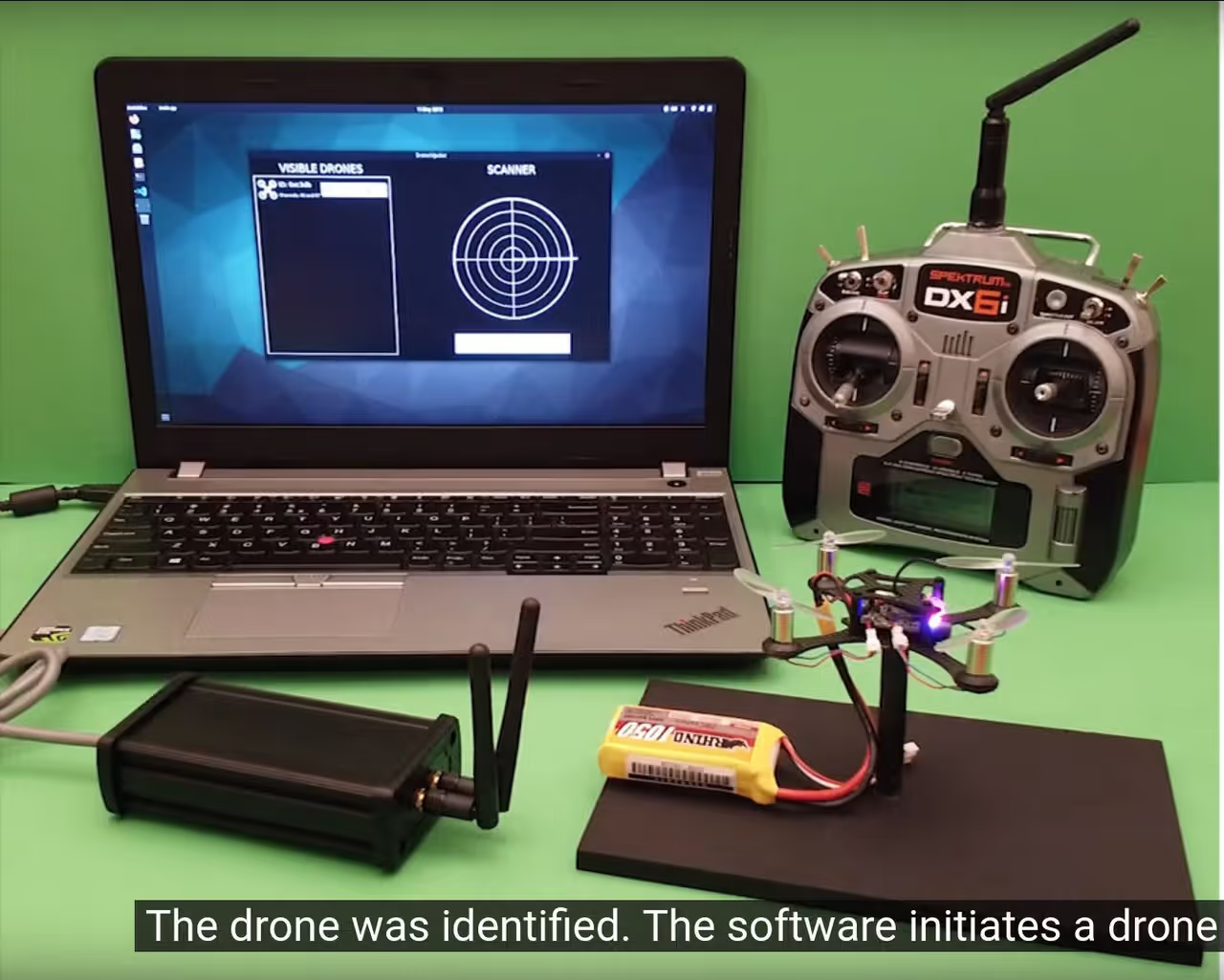
Student Project Demonstrates Drone Hijacking with LimeSDR Mini
LimeSDR boards have been put to many different uses and one area where they prove notably popular is in wireless security research. In this video from Ugnius Buržinskis, a student at Vilnius Gediminas Technical University, a demonstration of a bachelor thesis project is given where a LimeSDR Mini is used in a system designed to prevent UAVs from entering an unauthorised area.
The PC based application makes use of the SoapySDR API, implements an FSK modulator and demodulator, and is capable of identifying DSM2 controllers in the area. Once identified, drone control can be fully taken over using a timing attack and following which the polished GUI provides a convenient interface with virtual joystick controls. Ugnius notes that in order to achieve fast channel hopping speeds — the DSM2 protocol uses FHSS — and be capable of a timing attack, the software implementation makes use of LimeSDR Mini calibration caching.